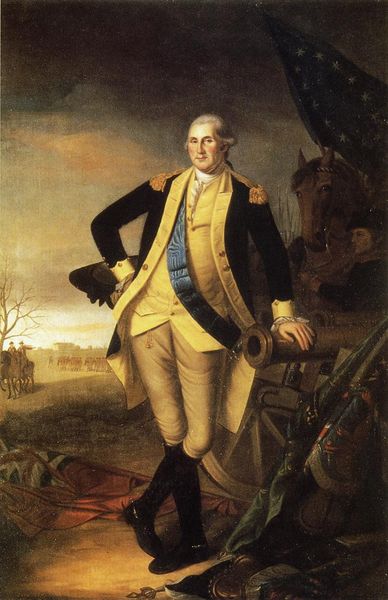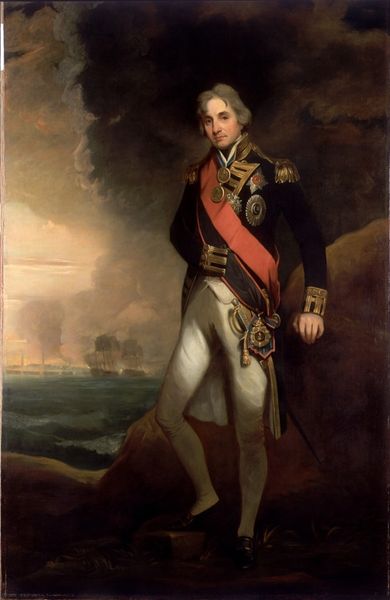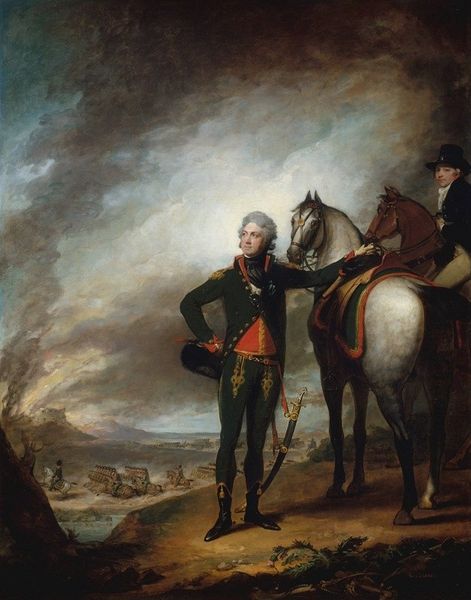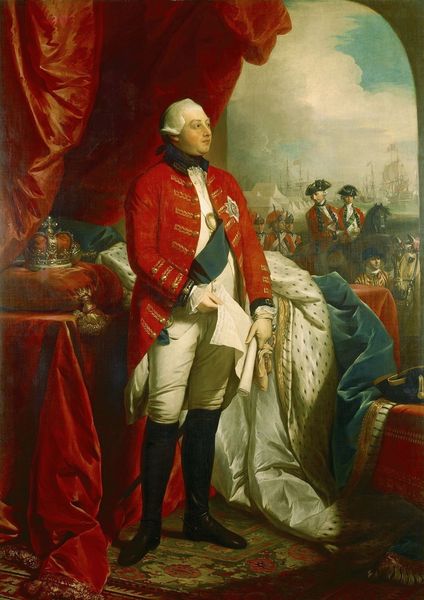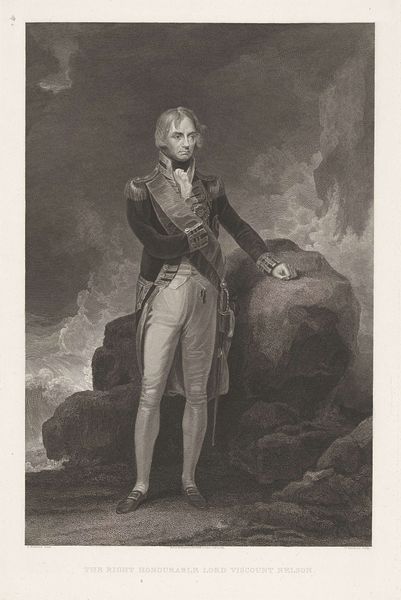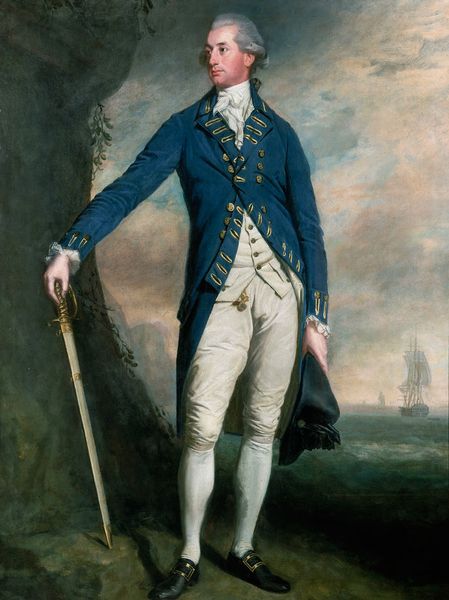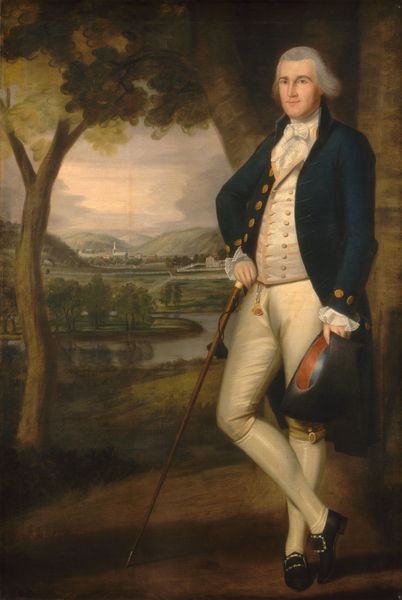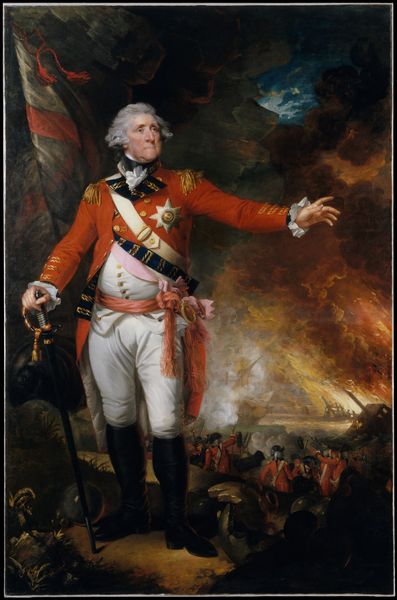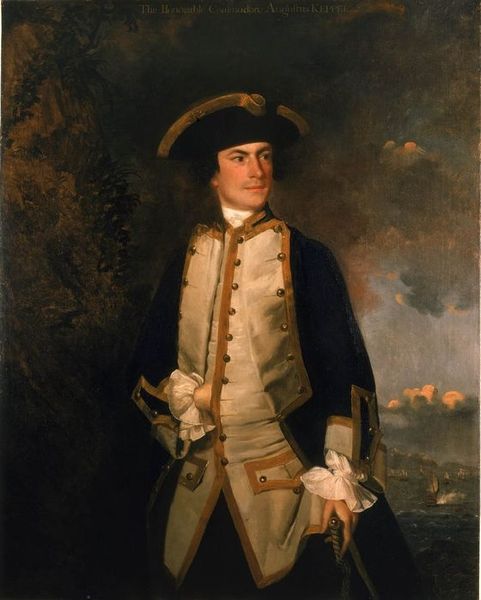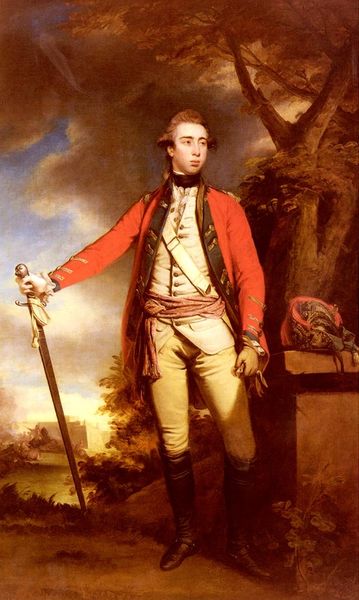
Copyright: Public Domain: Artvee
John Trumbull painted this portrait of George Washington and William Lee in the United States during the late eighteenth or early nineteenth century. It presents Washington as a triumphant general, yet it also subtly acknowledges the complicated social realities of the time. Trumbull was part of a generation of artists who believed that art should serve a public function. In this painting, he uses visual cues to create meaning. Washington is depicted in a heroic pose, holding a document, standing beside his enslaved servant William Lee. The inclusion of Lee is significant; slavery was deeply embedded in American society, even as the nation professed ideals of liberty and equality. The painting seems to be making a comment on the contradictions inherent in American society. Historians use primary sources such as letters, diaries, and financial records, as well as secondary analyses, to understand the social context of art. The meaning of art is always contingent on the social and institutional context in which it is made and viewed.
Comments
No comments
Be the first to comment and join the conversation on the ultimate creative platform.
